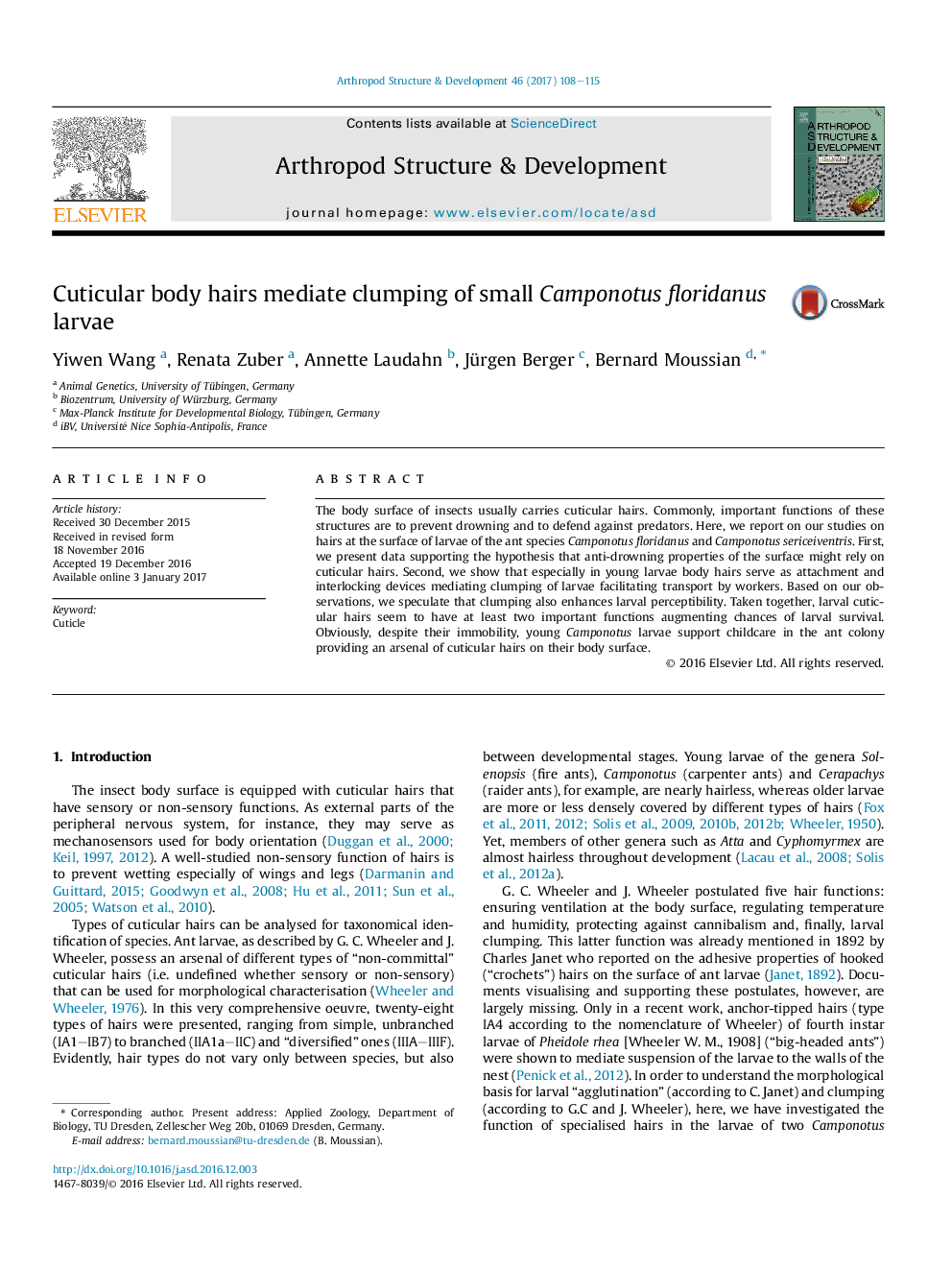| Article ID | Journal | Published Year | Pages | File Type |
|---|---|---|---|---|
| 5585076 | Arthropod Structure & Development | 2017 | 8 Pages |
Abstract
The body surface of insects usually carries cuticular hairs. Commonly, important functions of these structures are to prevent drowning and to defend against predators. Here, we report on our studies on hairs at the surface of larvae of the ant species Camponotus floridanus and Camponotus sericeiventris. First, we present data supporting the hypothesis that anti-drowning properties of the surface might rely on cuticular hairs. Second, we show that especially in young larvae body hairs serve as attachment and interlocking devices mediating clumping of larvae facilitating transport by workers. Based on our observations, we speculate that clumping also enhances larval perceptibility. Taken together, larval cuticular hairs seem to have at least two important functions augmenting chances of larval survival. Obviously, despite their immobility, young Camponotus larvae support childcare in the ant colony providing an arsenal of cuticular hairs on their body surface.
Related Topics
Life Sciences
Agricultural and Biological Sciences
Insect Science
Authors
Yiwen Wang, Renata Zuber, Annette Laudahn, Jürgen Berger, Bernard Moussian,
